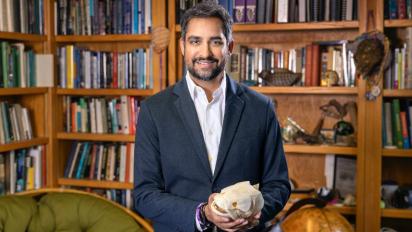How to support climate change education in your state's schools: Advice from eight lawmakers

So you want to help to improve climate change education. Good for you!
Climate change education is a critical component of any plan for responding to the disruptions caused by a warming climate. Today’s students will spend the rest of their lives on a hotter planet, mainly owing to the actions—and inactions—of their elders, and they need to be prepared with appropriate knowledge and know-how. And yet climate change education in the United States is often far from adequate.
If you think that suitable legislation might be the remedy, you’re not alone. In the last five years, by my count, no fewer than 90 measures aimed at supporting climate change education have been introduced in the legislatures of 21 states across the country. I interviewed eight of their sponsors by phone or email, and here’s what I learned that might help you, as a citizen concerned about the climate crisis, to support the introduction, passage, and enactment of such legislation in your state.
Seek sponsors who recognize the importance of the issue
Two of the legislators, James Talarico in Texas and Christine Palm in Connecticut, are former teachers themselves, so they didn’t have to be convinced of the importance of preparing students.
“Education is the first step in helping create the leaders of tomorrow who will need to tackle this issue head-on,” Talarico told me. “The first step to solving a crisis as complex and existential as climate change is through education.”
Harness the energy and enthusiasm of youth activists
Wendy Thomas in New Hampshire was already concerned about climate change, but it was youth activists from 350nh who convinced her to introduce her resolution supporting climate change education. Youth-led and youth-oriented climate activist groups, including Ten Strands in California, Green Eco Warriors in Connecticut, and Climate Generation in Minnesota, led the support for the measures in their states.
Emphasize the injustice of not providing climate change education
“Disadvantaged communities throughout the state … are likely to experience the first and worst climate impacts,” even while they have benefited the least from the activities that cause climate change, Andrew Gounardes in New York told me. “We have an obligation to ensure our youngest and most vulnerable community members gain the knowledge and skills to adapt to a rapidly changing world.”
Remember that politics is the art of the possible
Luz Rivas’s bill, which was enacted in 2023, mandated the teaching of climate change in California’s public schools, but a previous version would also have required climate change to be a mandatory topic of study in high school. Why the retreat from the previous version? Rivas explained that California’s schools were under so much stress owing to the COVID-19 pandemic that she decided not to insist on the more ambitious provision.
Expect political partisanship to be a barrier
Juan Mendez in New Mexico noted, “Political partisan- ship overrides what needs to be done” to improve climate change education.
Chris Larson in Wisconsin similarly reported, “Even critical issues that should be bipartisan are halted due to partisanship.”
Larson added that he wished that he had worked more with the business community, which might have enabled his climate change education bill “to garner Republican legislative support.”
Communicate with your legislators
All the legislators I interviewed agreed that people who want to support measures like theirs can do a lot to help. Palm in Connecticut emphasized that state government is “the sweet spot” for action on climate change: big enough to make a difference but small enough to be approachable. Simply letting your legislators know that you support climate change education, or a particular measure intended to improve it, can go a long way in motivating them.
Make your support for climate change education visible
Testifying in legislative committee hearings can make a huge difference; even attending hearings without testifying to show your support can be helpful, Nicole Mitchell in Minnesota told me. Mendez in New Mexico stressed the importance of storytelling in any communication with legis- lators in order to capture their attention and their emotion. “I can be ignored,” he acknowledged, “but real people who tell their stories are harder to ignore.”
Be persistent
Only two of the legislators I interviewed—Rivas in California and Palm in Connecticut — have enjoyed success with their measures so far, and neither of them succeeded on their first try. Indeed, it took four years and two legislative sessions for Palm’s proposed statutory requirement to teach climate change in Connecticut’s public schools to pass. Talarico in Texas expressed his resolve: “Despite our climate education bill not passing, I’m not giving up — and neither should you.”
Climate change education is popular: about 75% of Americans agree that schools should teach about the causes, consequences, and potential solutions to global warming. The challenge is to channel the public’s abstract support for climate change education into specific and implementable legislation that will make a real difference in the classroom. That’s how legislators and their constituents can help to equip today’s students to cope with the challenges of the warmer world they will inherit.
Originally published at Yale Climate Connections on June 4, 2024.






